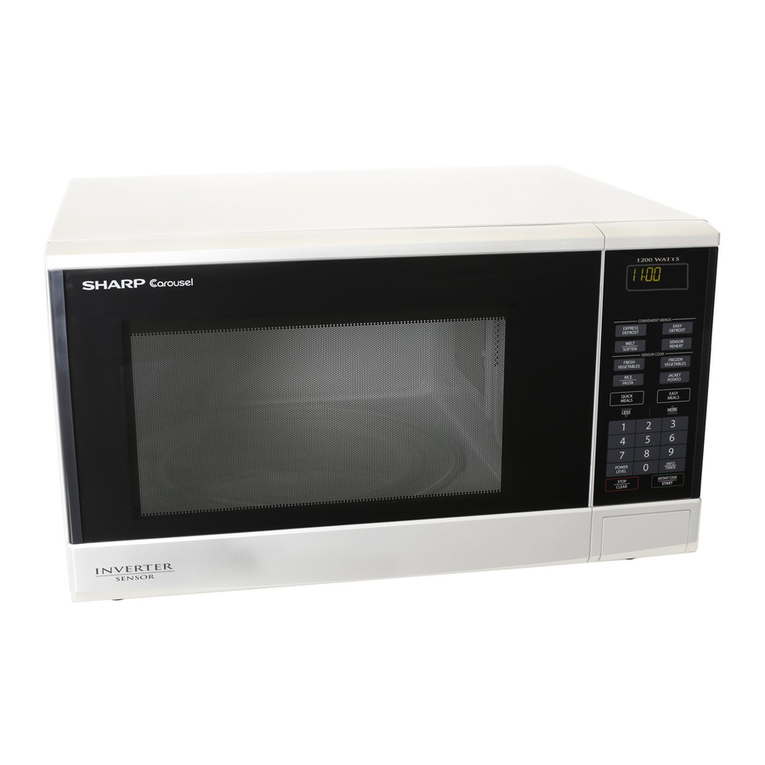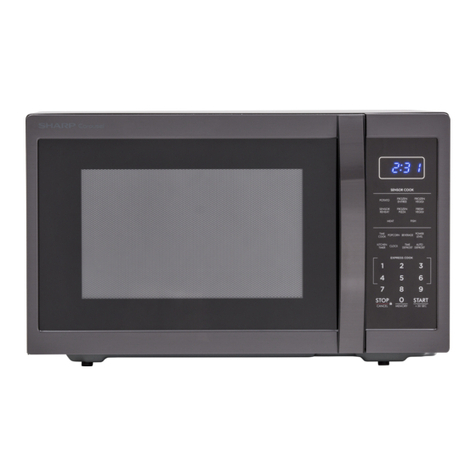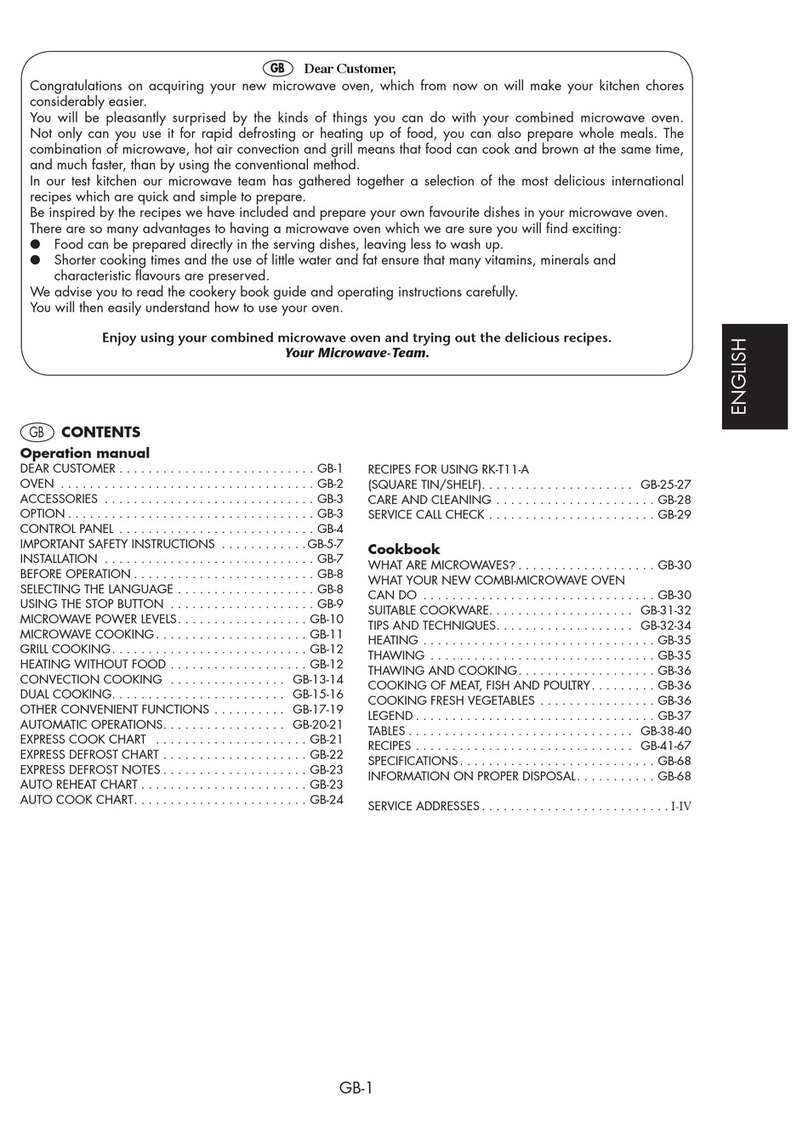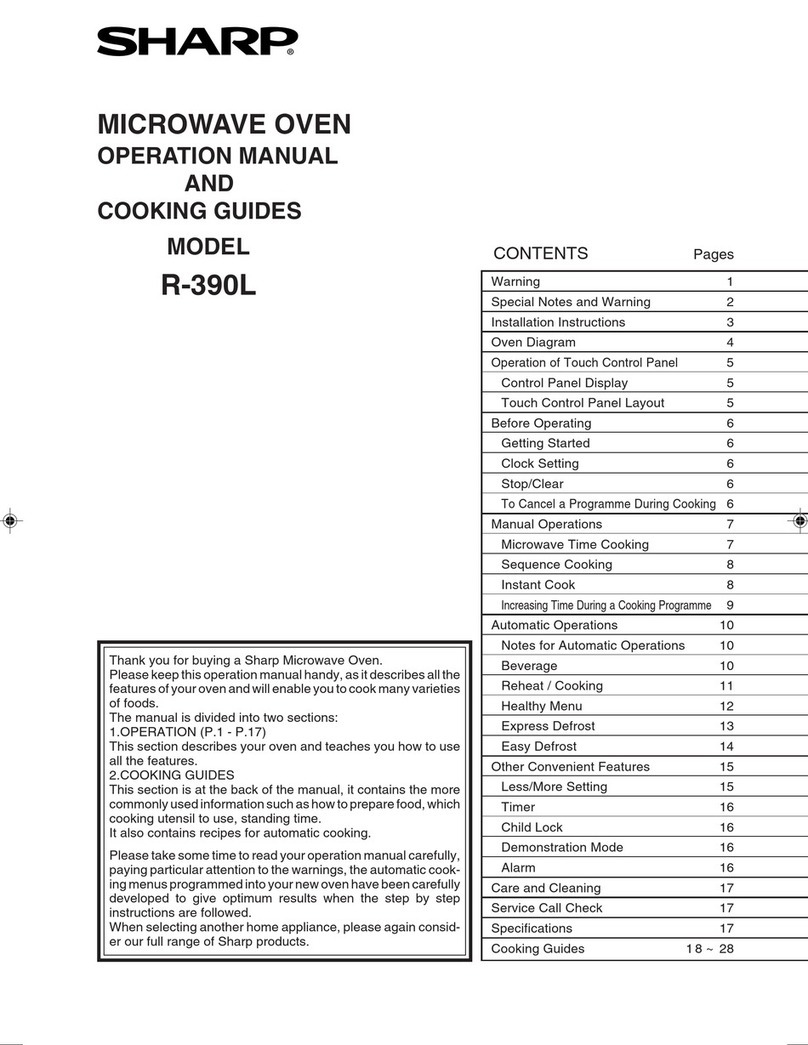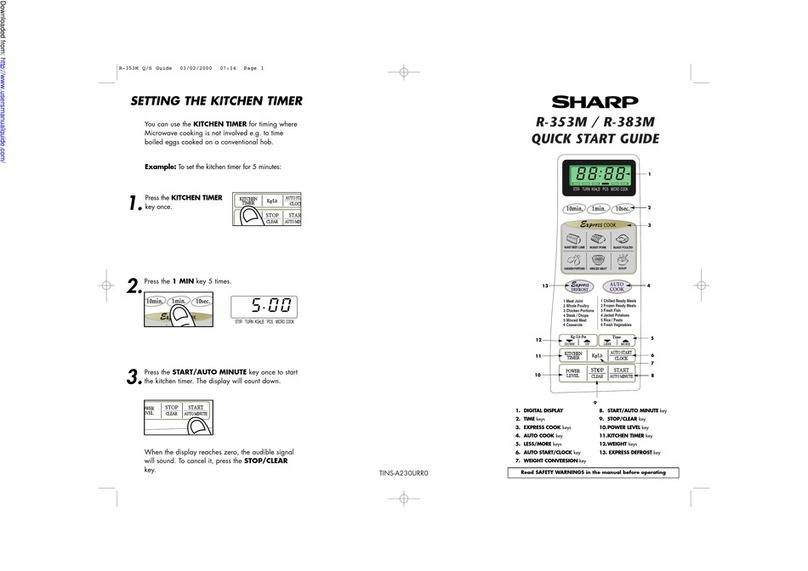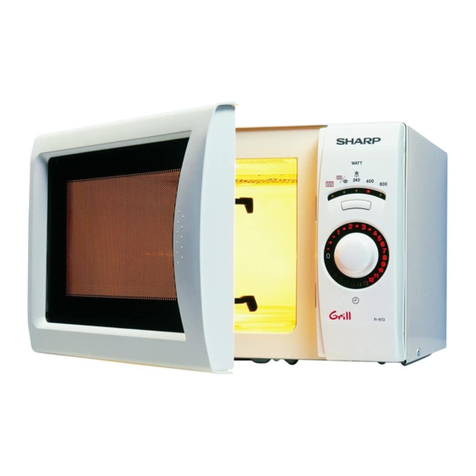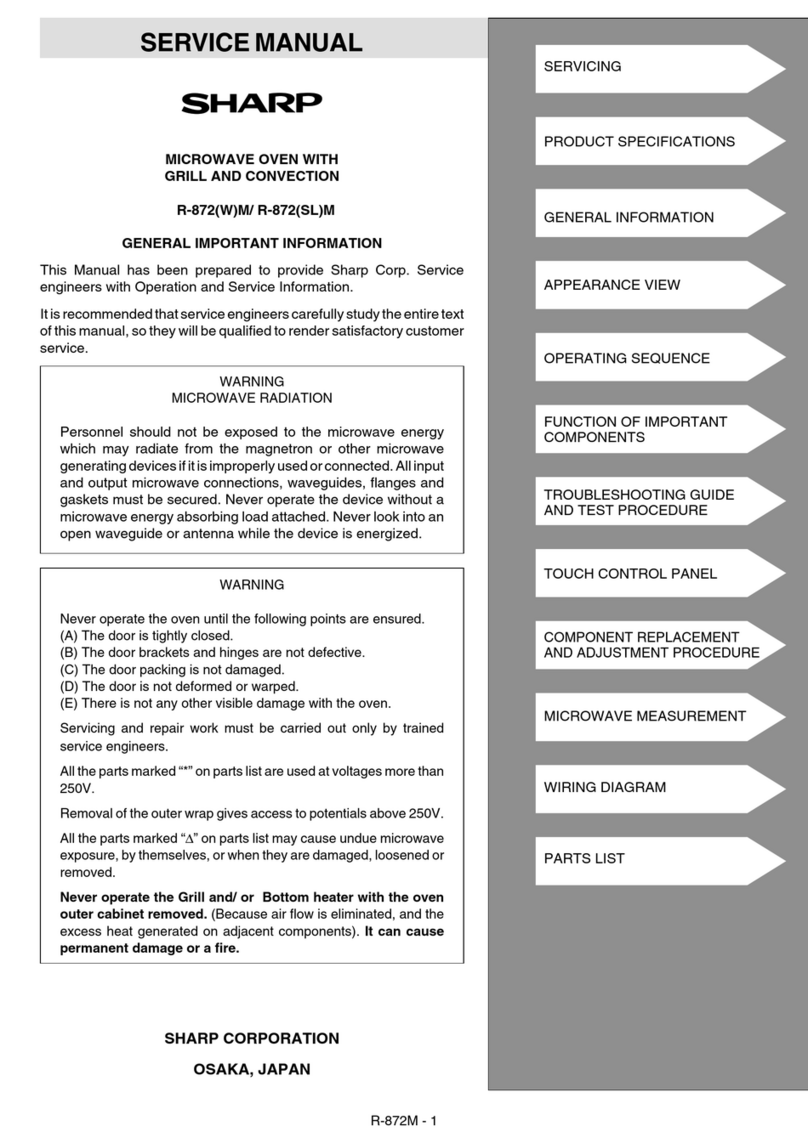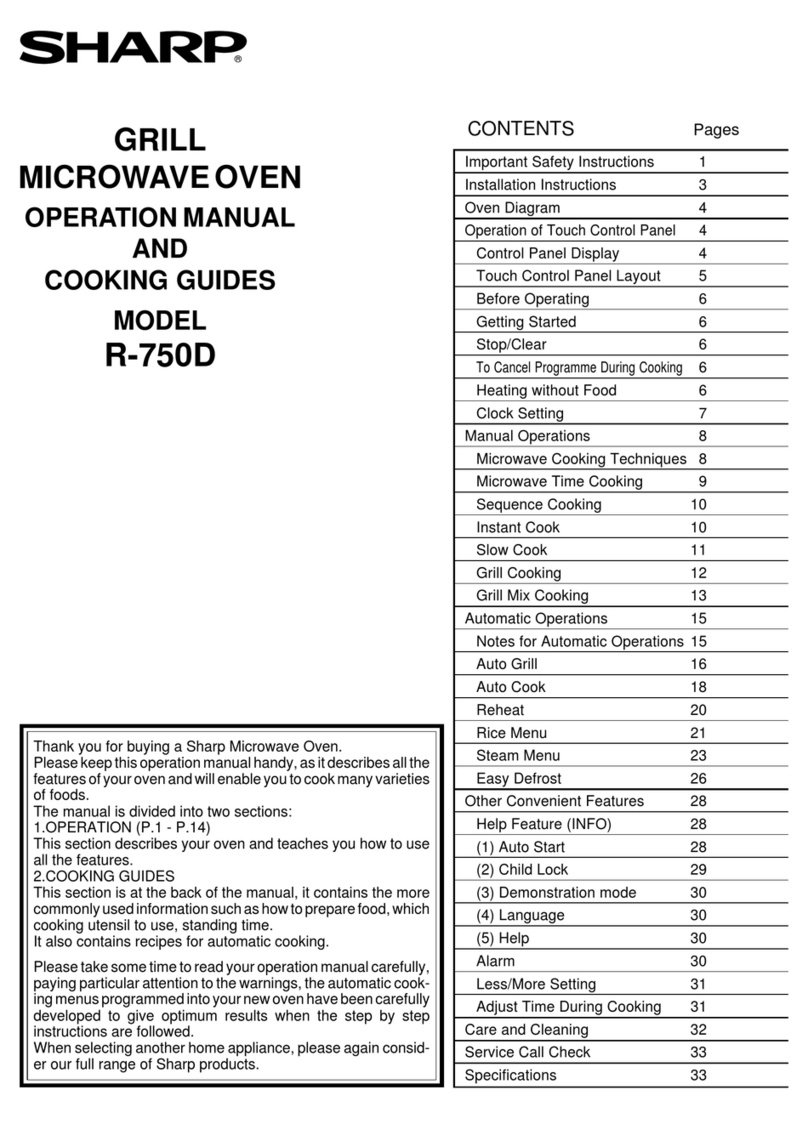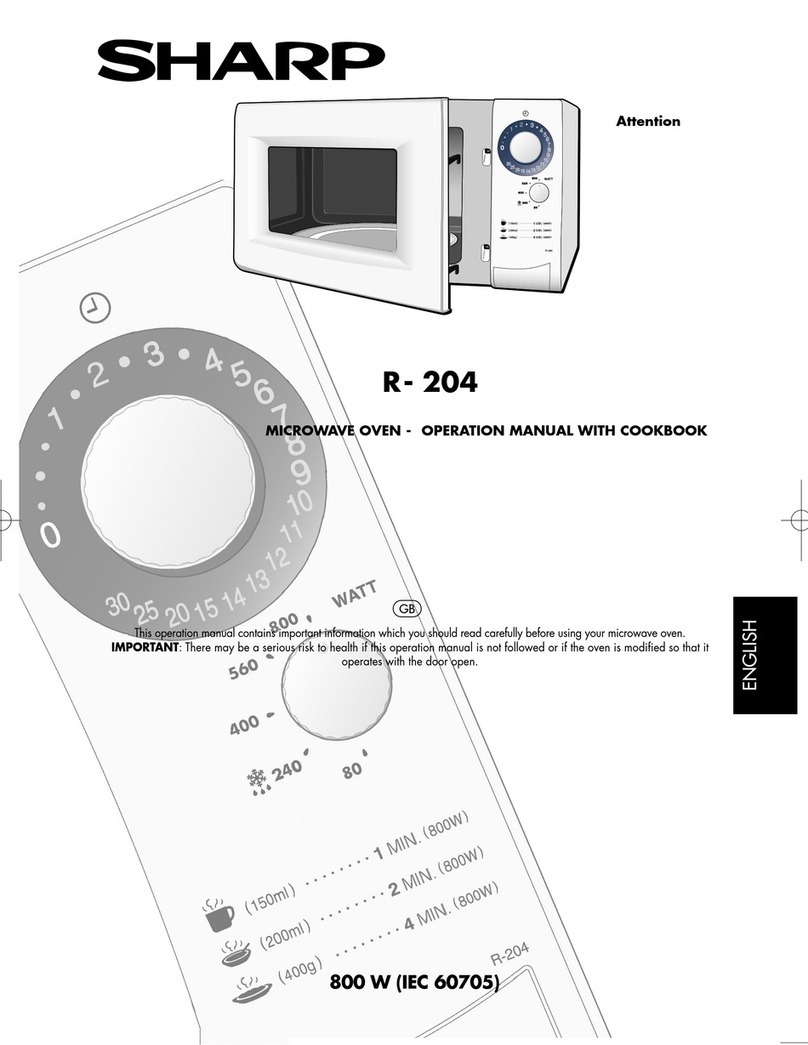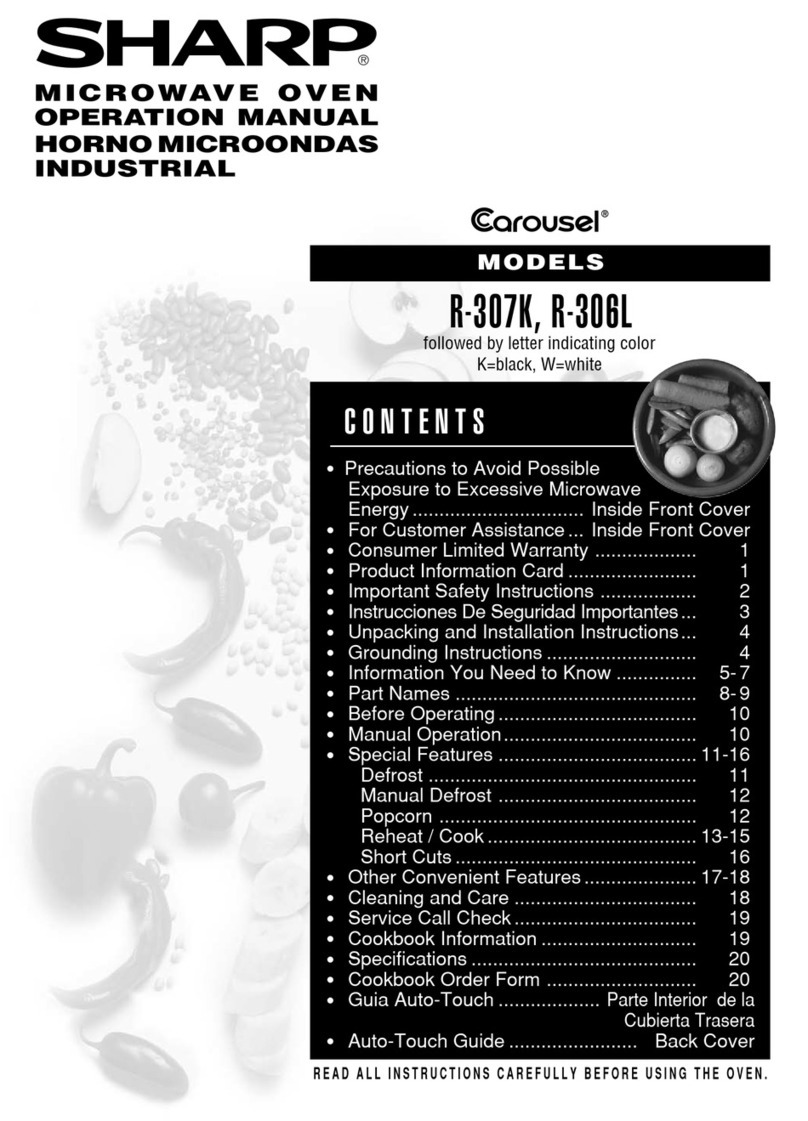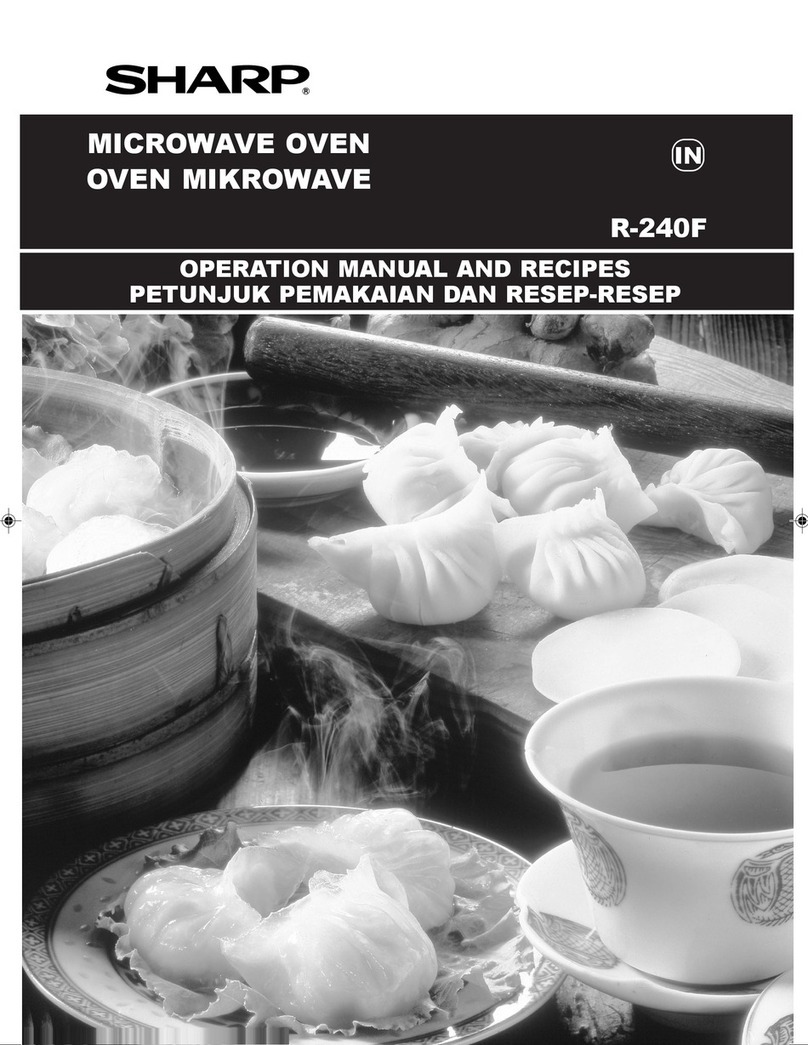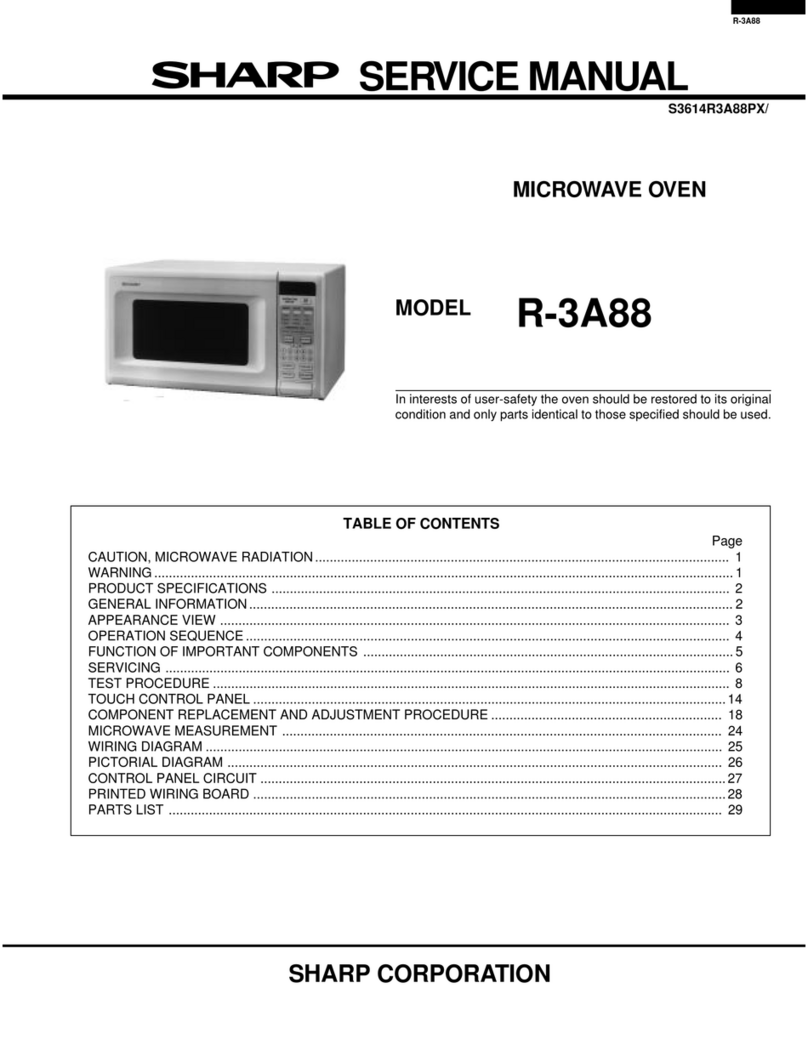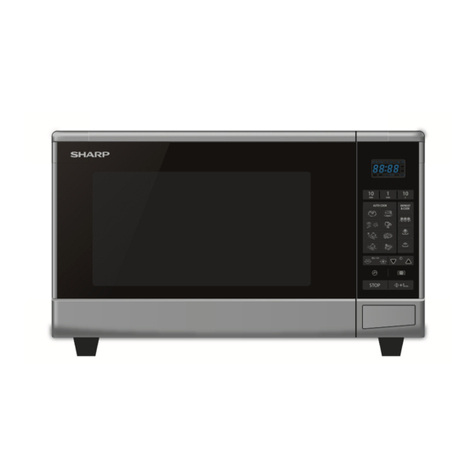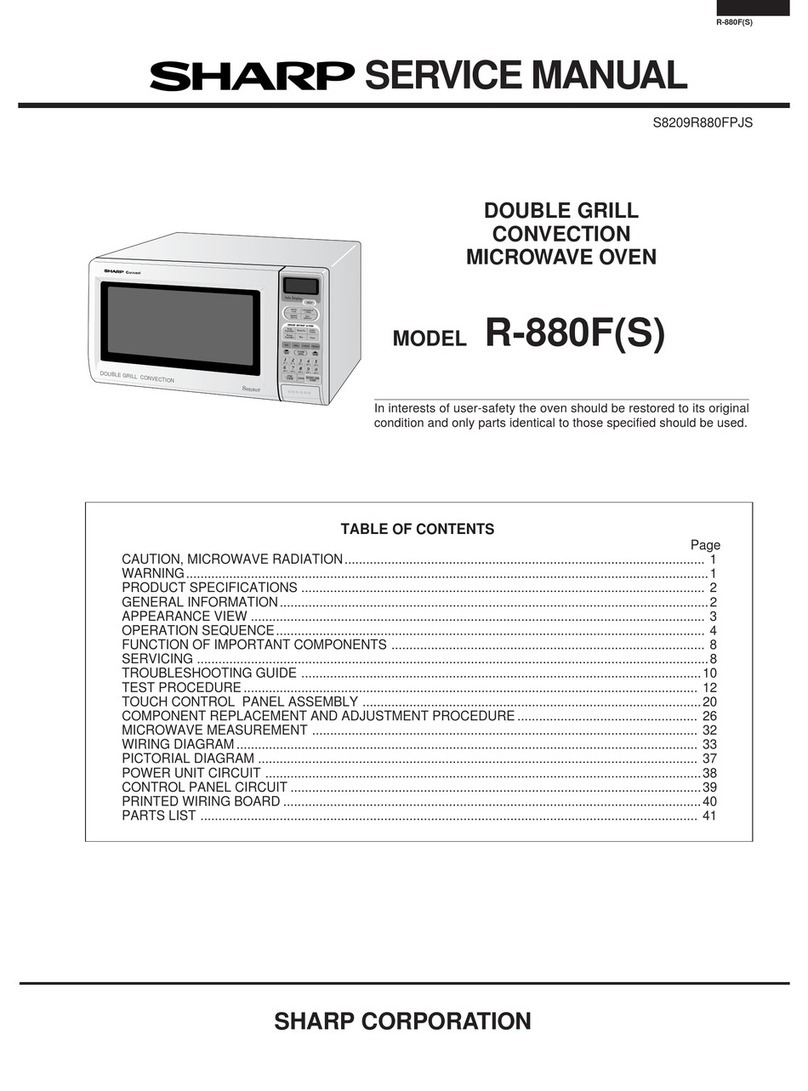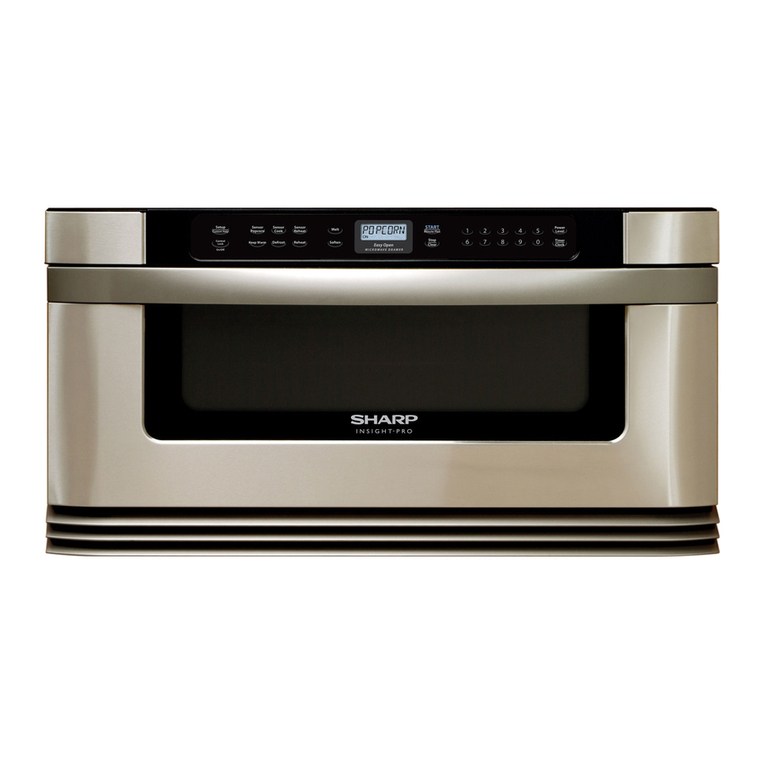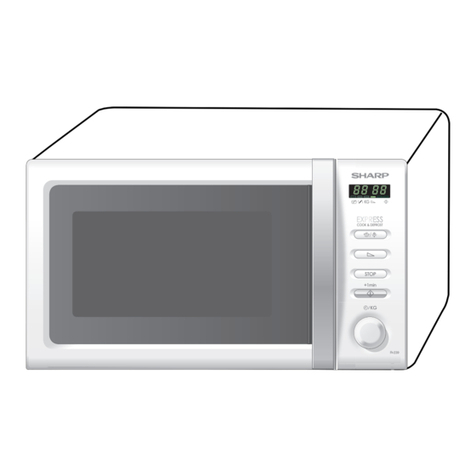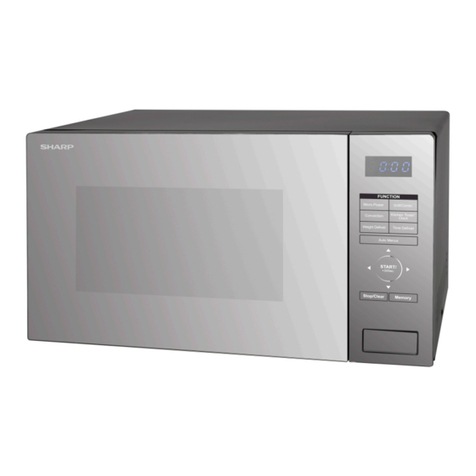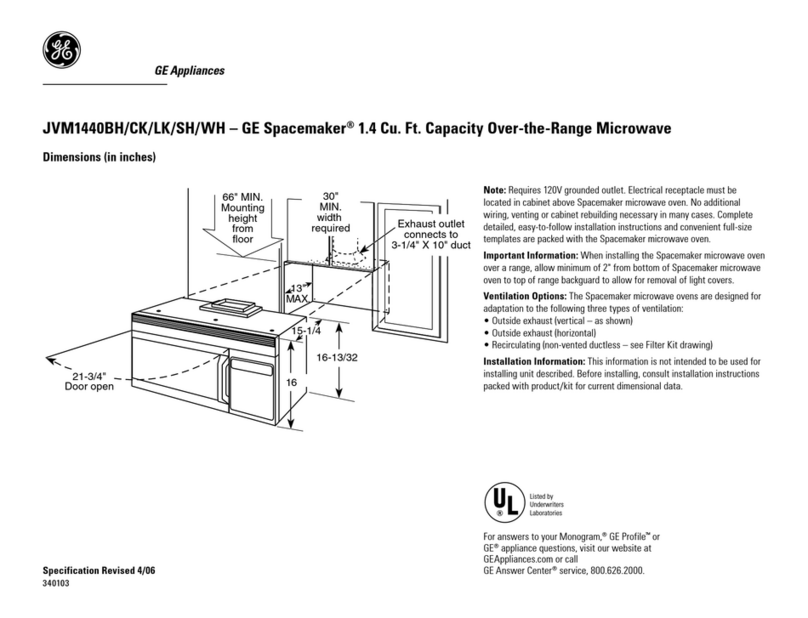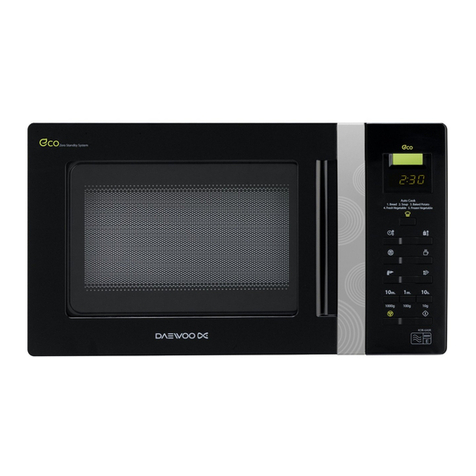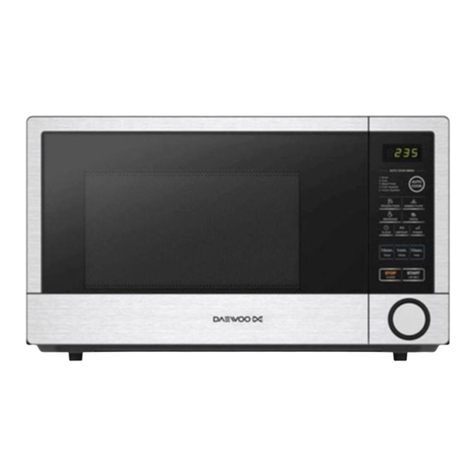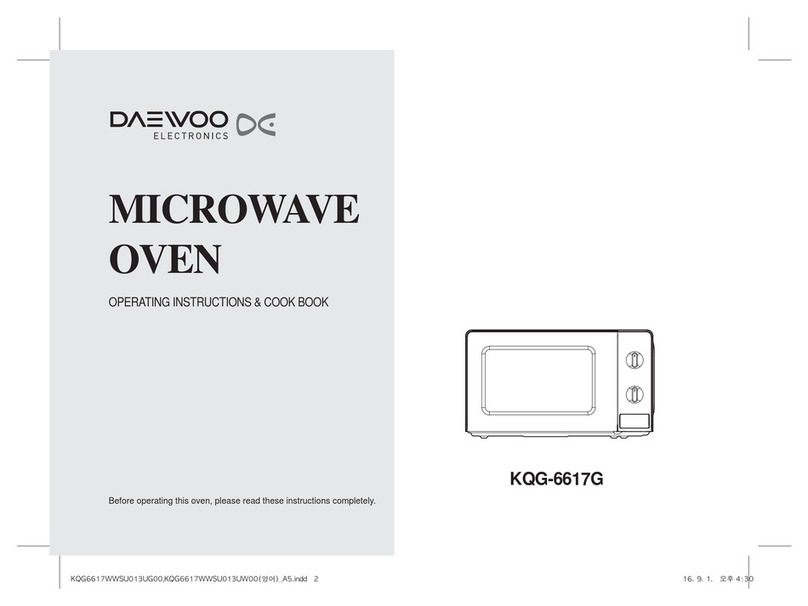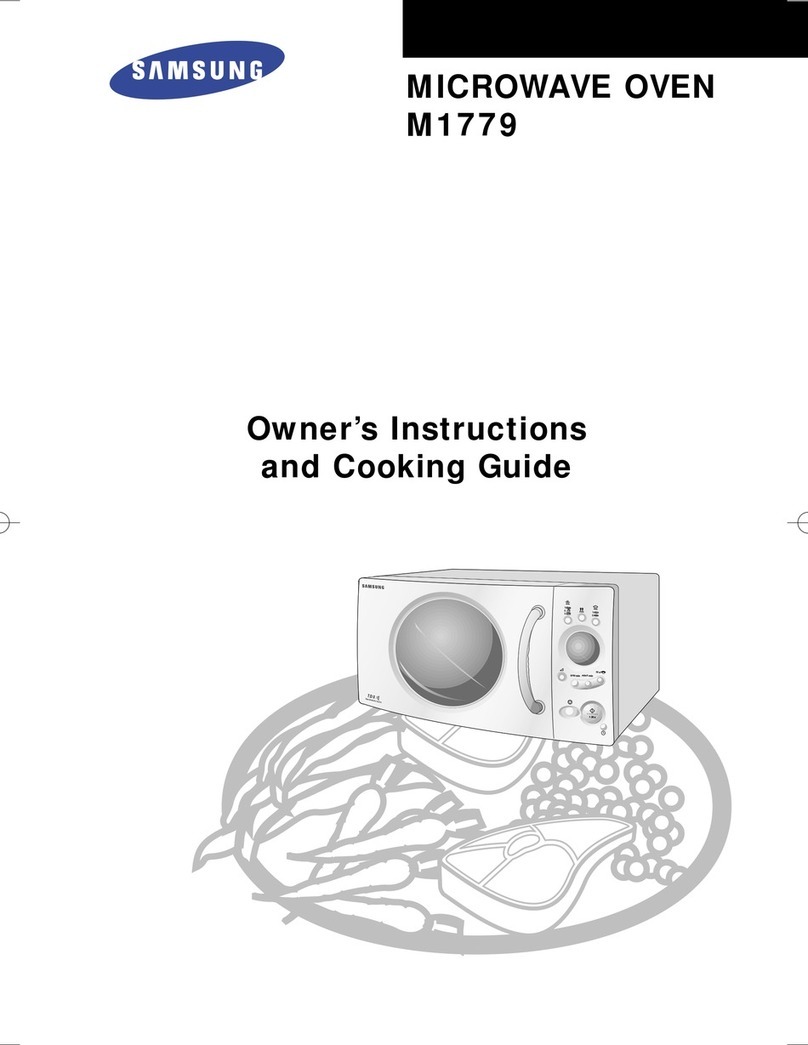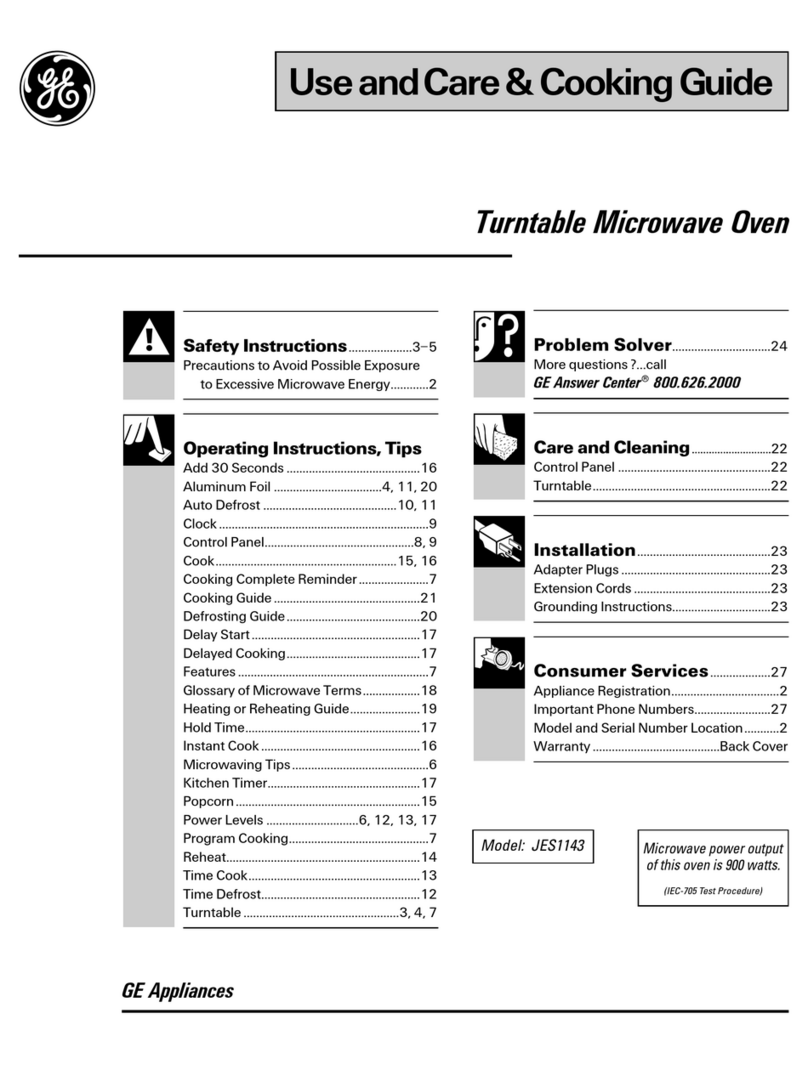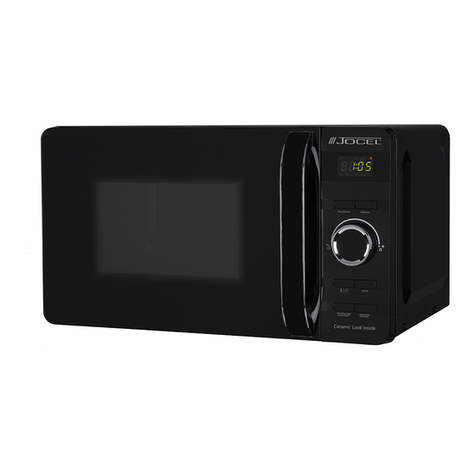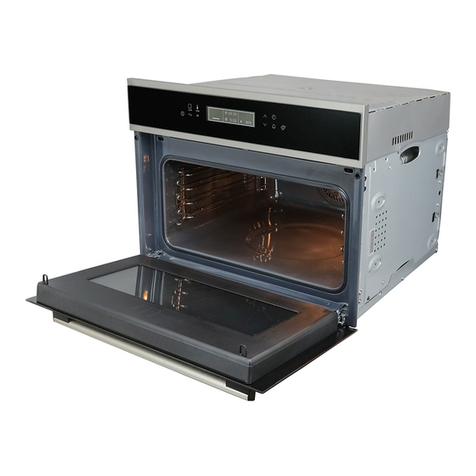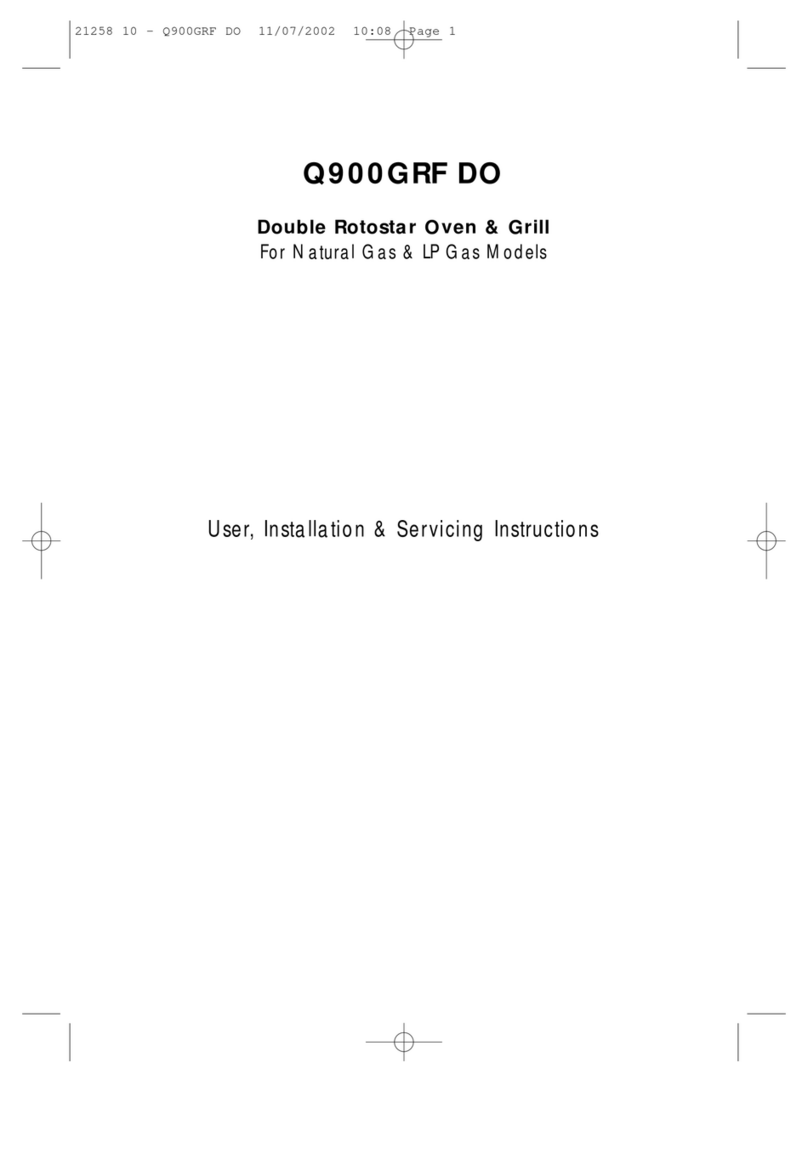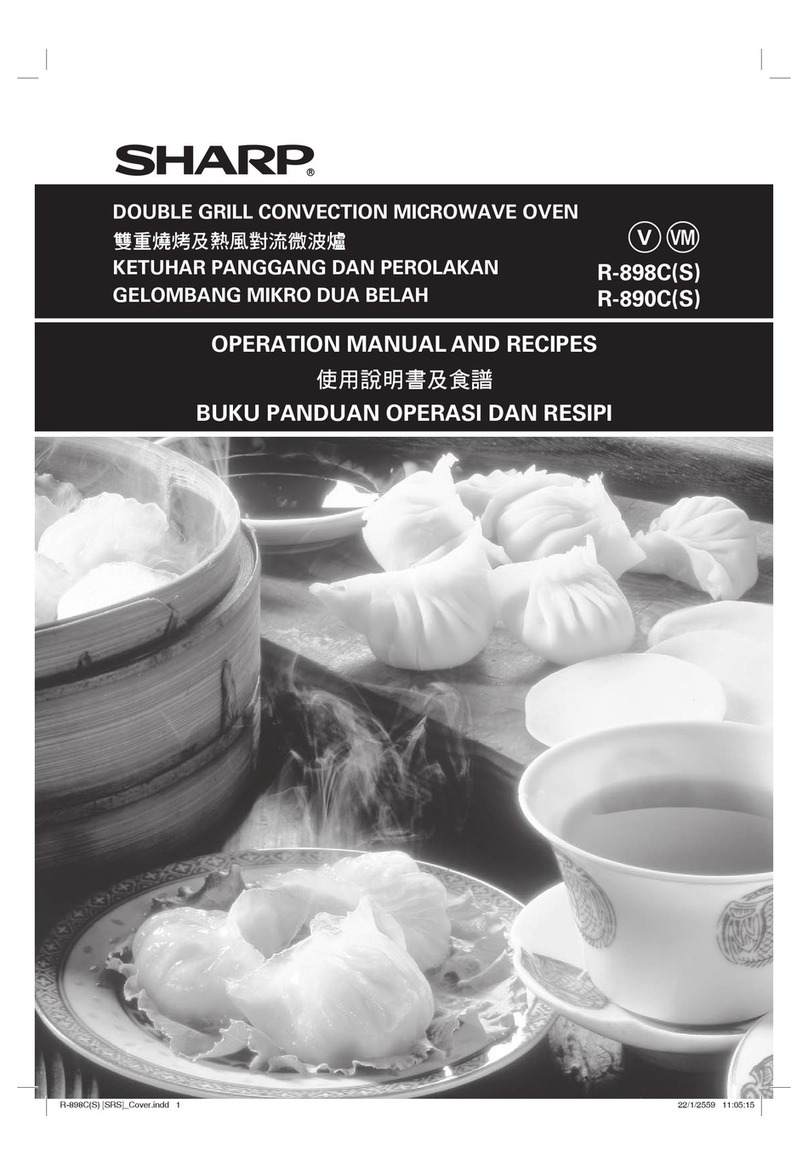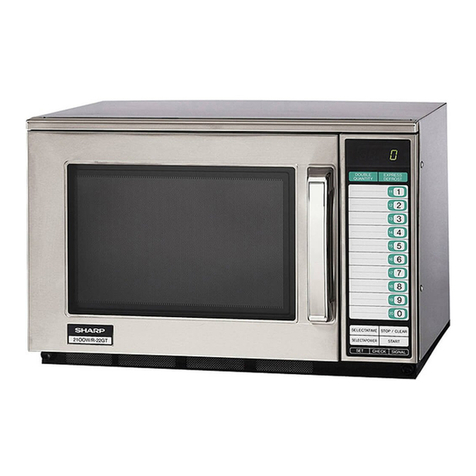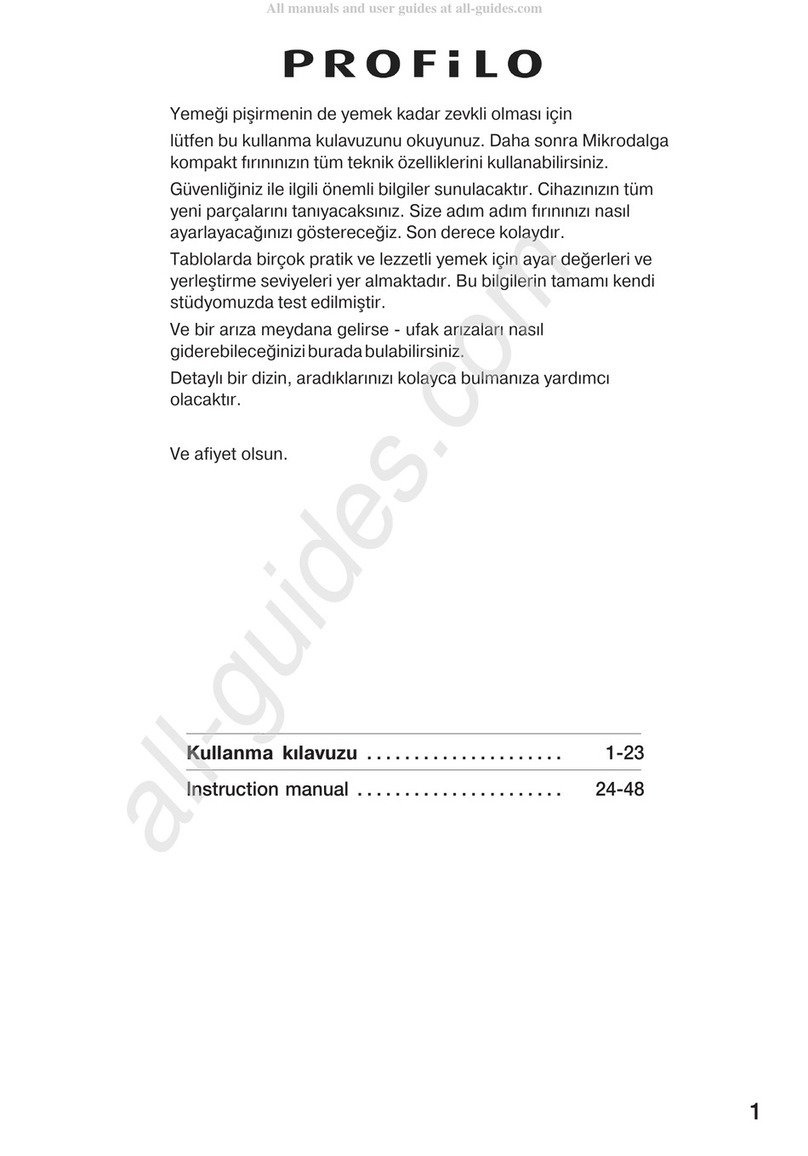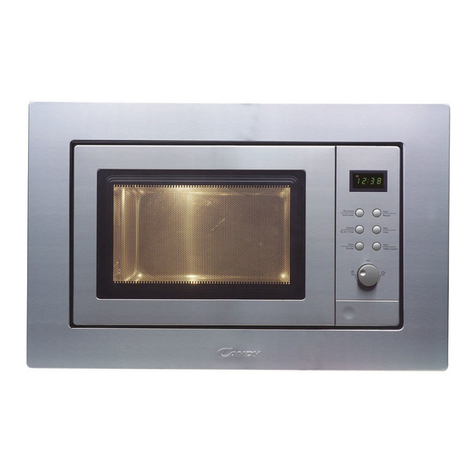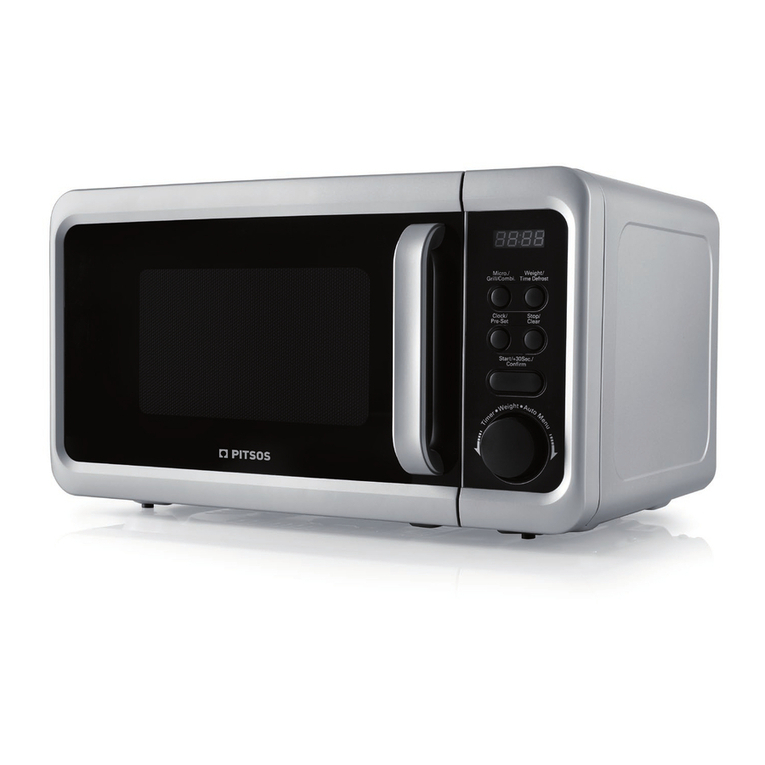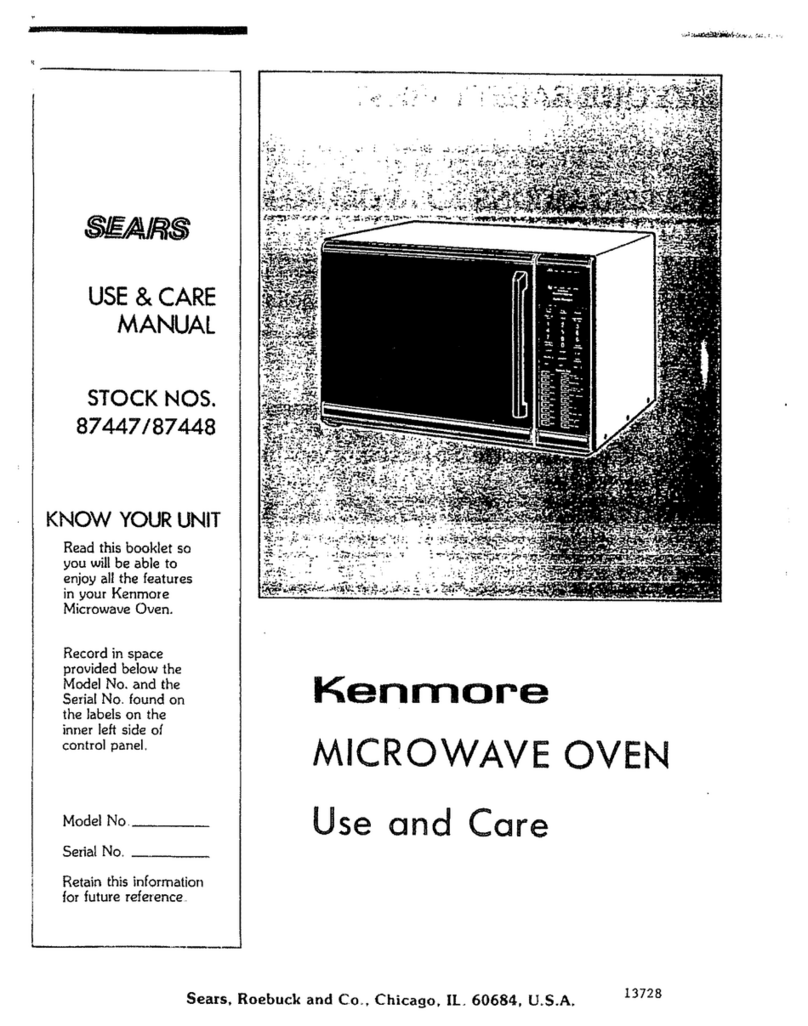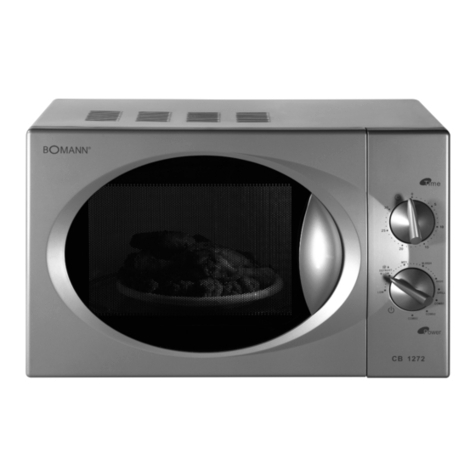
5
R-1210
R-1211
OPERATION
DESCRIPTION OF OPERATING SEQUENCE
Thefollowingisadescriptionofcomponentfunctionsduring
oven operation.
OFF CONDITION
Closing the door activates the door sensing switch and
primary interlock switch. (In this condition, the monitor
switch contacts are opened.)
When oven is plugged in, 120 volts A.C. is supplied to the
control unit. (Figure O-1).
1. The display will show "SHARP SIMPLY THE BEST
PRESS CLEAR AND PRESS CLOCK".
Toset anyprogram orset theclock, youmust firsttouch
the STOP/CLEAR button. The display will clear, and " :
" will appear .
POWER LEVEL P-0 TO P-90 COOKING
When Variable Cooking Power is programmed, the 120
voltsA.C.issuppliedtothepowertransformerintermittently
throughthecontactsofrelay(RY2)whichisoperatedbythe
control unit within an interval second time base.
Microwave power operation is as follows:
VARI-MODE ON TIME OFF TIME
HIGH (100% power) 32 sec. 0 sec.
P-90 (approx. 90% power) 30 sec. 2 sec.
P-80 (approx. 80% power) 26 sec. 6 sec.
P-70 (approx. 70% power) 24 sec. 8 sec.
P-60 (approx. 60% power) 22 sec. 10 sec.
P-50 (approx. 50% power) 18 sec. 14 sec.
P-40 (approx. 40% power) 16 sec. 16 sec.
P-30 (approx. 30% power) 12 sec. 20 sec.
P-20 (approx. 20% power) 8 sec. 24 sec.
P-10 (approx. 10% power) 6 sec. 26 sec.
P-0 (0% power) 0 sec. 32 sec.
Note: The ON/OFF time ratio does not correspond with
the percentage of microwave power, because
approx. 3 seconds are needed for heating of the
magnetron filament.
SENSOR COOKING CONDITION
Using the Sensor Cooking function, the foods are cooked
without figuring time, power level or quantity. When the oven
senses enough steam from the food, it relays the information
toitsmicroprocessorwhichwillcalculatetheremainingcook-
ing time and power level needed for best results. When the
foodiscooked,watervaporisdeveloped.Thesensor“senses”
the vapor and its resistance increases gradually. When the
resistance reaches the value set according to the menu,
supplementarycookingisstarted.Thetimeofsupplementary
cookingisdeterminedbyexperimentwitheachfoodcategory
and inputted into the LSI.
An example of how sensor works (Baked potatoes):
1. Potatoes at room temperature. Vapor is emitted very
slowly.
2. Heatpotatoes. Moistureand humidityis emittedrapidly.
You can smell the aroma as it cooks.
3. Sensor detects moisture and humidity and calculates
cooking time and variable power.
Cooking Sequence.
1. Operatetheoveninsensorcookingmodebyreferringto
operation manual.
NOTE: TheovenshouldnotbeoperatedonSensorCooking
immediately after plugging in the unit. Wait two
minutes before cooking on Sensor Cooking.
2. The coil of shut-off relay (RY1) is energized, the oven
lamp, turntable motor and cooling fan motor are turned
on, but the power transformer is not turned on.
3. Afterabout16seconds,thecookrelay(RY2)isenergized.
The power transformer is turned on, microwave energy
is produced and first stage is started.
The 16 seconds is the cooling time required to remove
any vapor from the oven cavity and sensor.
NOTE: Duringthisfirststage,donotopenthedoorortouch
STOP/CLEAR pad.
4. When the sensor detects the vapor emitted from the
food,thedisplayswitchesoverto theremainingcooking
time and the timer counts down to zero.
At this time, the door may be opened to stir food, turn it
or season, etc.
5. Whenthe timerreaches zero,an audiblesignal sounds.
The shut-off relay and cook relay are de-energized and
the power transformer, oven lamp, etc. are turned off.
6. OpeningthedoorortouchingtheSTOP/CLEARpad,the
timeofdaywillreappearon thedisplay andthe ovenwill
revert to an OFF condition.
MICROWAVE
MICROWAVE
AH SENSOR
